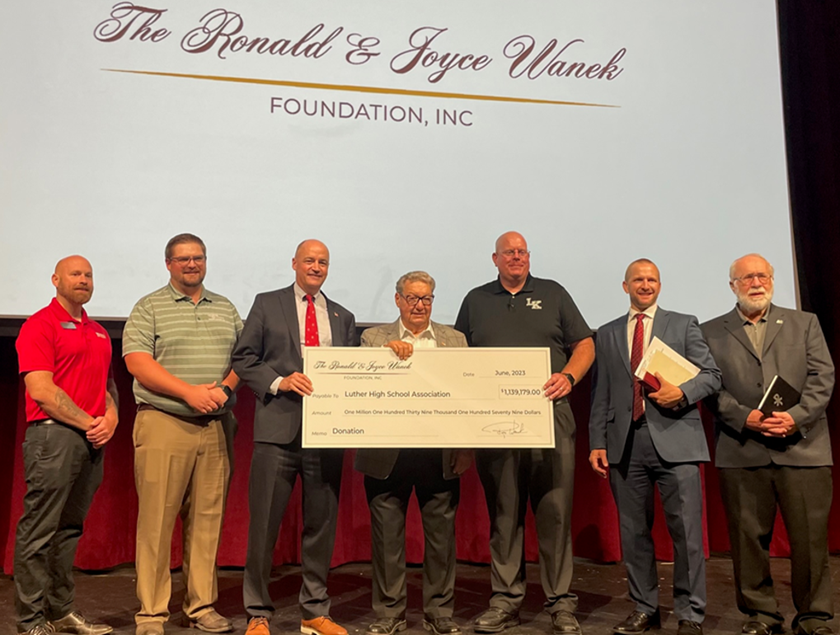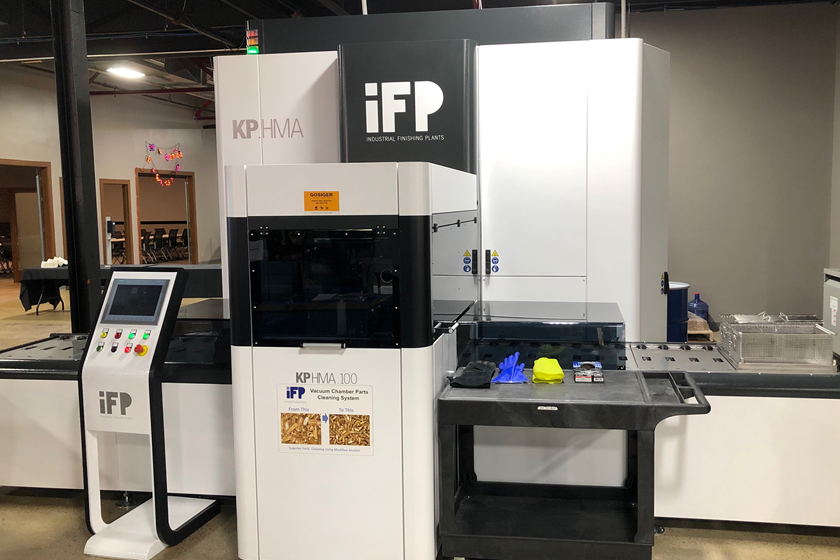Boosting the Power of Immersion Degreasing
How do you make your parts cleaning operation more efficient? Add agitation, says Bex’s Steve Phillips.
Q. How can we boost the immersion degreasing operation for cleaning parts in our shop?
A. Cleanliness specifications continue to rise for manufacturers of high-precision components in every sector. Aqueous cleaning in immersion (soak) tanks is the standard. Agitation makes the process more efficient and reduces cycle times.
Featured Content
In an aqueous degreasing tank, a static boundary layer with soil-saturated surfactants forms next to the part surface to be cleaned. This layer erects a barrier between the part surface and most of the cleaning agent, reducing degreasing potential. Creating agitation in the tank disrupts this layer and allows fresh solution to contact the part’s surface, accelerating cleaning. There are several ways to create agitation:
Air spargers are a common agitation method, but one with serious downsides. These include damage to the cleaning solution, uneven results and excessive foaming. But introducing air into the tank has predictable consequences:
- Air brings in carbon dioxide (CO2), which forms carbonic acid that reacts with the alkaline components of the aqueous solution, diminishing its effectiveness.
- Acid formation reduces the solution’s service life by lowering its pH, compromising its corrosion inhibitors.
- Input air, contaminated by the compressor (or atmosphere), often causes oil to be introduced into the tank.
- Bubbles are not a serious agitation method for thorough and predictable tank mixing.
- Air or vapor bubbles form on the underside of some parts upon immersion, inhibiting contact with the cleaning liquid and preventing cleaning (or plating) from occuring.
- The air stream also introduces oxygen into the tank, which encourages oxidation.
- Air can cause detergents formulated for soak-tank degreasing to foam, which is always a negative since it is dragged into the initial rinse, contaminating that stage.
Tank agitation constantly presents fresh detergent to the surface of the parts. Bottom line: the solution is the solution. Agitation further enhances soil removal.
Submerged turbulence using eductors is a type of tank agitation and, for most applications, the most effective way to clean parts while minimizing process time and optimizing bath life. With this under-surface turbulence, the plume of liquid coming from the eductor passes over the surface of the part and generates a mechanical scrubbing action that enhances the cleaning effect.
The nozzle generates a high-velocity fluid jet to entrain the liquid surrounding the eductor. The fluid in the nozzle jet and the entrained liquid are forced through a diffuser, where the high-throughput velocity creates a turbulent flow. This turbulence mixes the two fluids while avoiding foaming and agitation at the air-liquid interface.
The advantage of an eductor is that the discharge plume is much broader than the jet from a solid-stream nozzle of equivalent energy. Notably, eductors enable small pumps to efficiently circulate large volumes of tank solution. Each eductor circulates a tank volume equal to four to five times the solution volume pumped.
Eductors also suspend solids, and sweep debris or sludge toward a filter intake. This simplifies filtration and greatly reduces particulate settling on the tank bottom—a major maintenance headache. Eductors also mix and agitate without introducing foreign matter, reducing solution temperature or creating liquid layers. Well-engineered eductors are also clog-resistant, have no moving parts and last an extremely long, maintenance-free amount of time.
Agitating 50× per hour can result in reduction of cleaning time up to one-third. Parts with blind holes using directed eductor solution agitation can expect a reduction in cleaning time of as much as 50 percent.
Eductors are a cost-effective way to enhance the power of virtually any cleaning solution. Benefits of submerged turbulence include faster processing, extended bath life, less external contamination and lower oxidation corrosion potential.
There also are other options for agitating tanks that can improve the cleaning potential of a stagnant soak tank:
Ultrasonics—sound waves produced by a submerged transducer—create tiny bubbles that implode on the part surface. This implosion releases high energy, which creates heat and power to assist in the scrubbing action. The ultrasonic frequency determines the cleaning power: Lower frequencies are more powerful and less directed; higher frequencies are less powerful but can be directed to the part. This method is best for small tanks due to the high equipment cost.
Stroke is simple vertical movement of the parts within the tank solution. Parts are typically racked on a platform, which then moves through the tank. This action keeps fresh cleaning solution on the part surface and moves the solution to keep it well-circulated within the tank.
Tumbling agitation is used for parts with cavities and blind holes that can entrap the solution. These parts are racked in a basket or fixture that rotates within the cleaning solution. Some applications, particularly those with very fast processing speeds, combine tumbling with eductors.
Recirculation involves pumping the solution from one end to the other, creating a constant, low-speed, fluid flow. More effective recirculation is possible with eductors.
Steve Phillips is the U.S. sales manager for Bex Inc. Visit bex.com.
RELATED CONTENT
-
Alkaline Cleaning Guide
Gregg Sanko, Senior Chemist, Oakite Products, Inc. provides an overview of the alkaline cleaning process.
-
Conversion Coatings: Phosphate vs. Zirconium
Both phosphate-based and zirconium coatings have their advantages, but zirconium is fast becoming the pretreatment of choice.
-
Cleaning Magnesium
Question: What is the recommended chemical cleaning process and composition prior to electroless nickel plating for magnesium?



















